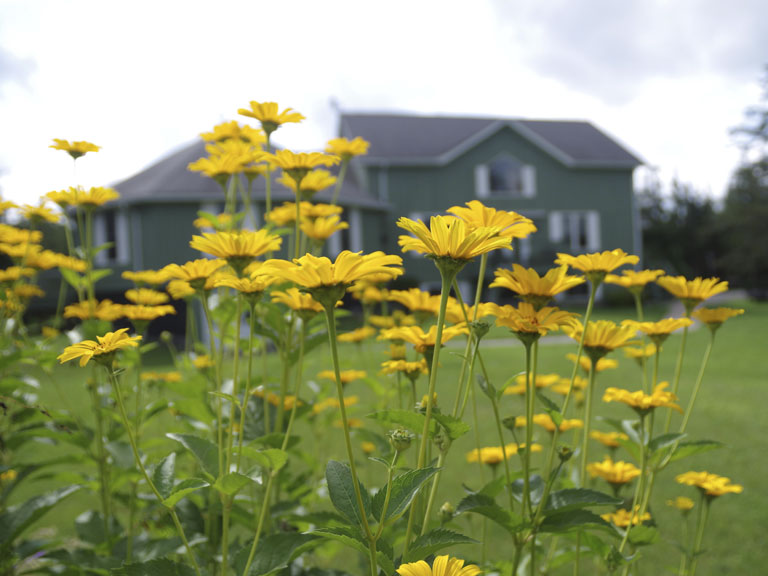County News
Pathway to healing

Retreat offers unique residential healing program
Nestled in the northeast quadrant of Big Island is a tranquil oasis of healing and recovery for survivors of sexual assault. Now in its fifth year, the Paths of Courage Healing and Retreat Centre is operated by the Sexual Assault Centre for Quinte and District (SACQD) and offers a six-day program for survivors of sexual assault to help deal with their trauma.
“Paths of Courage is an opportunity for anyone who has experienced sexual violence at any time in their life,” says Elise Hineman, SACQD executive director. “It’s a place for them to come and do really intensive, deep healing work.”
The program is offered to both men and women, separately, in groups of up to 10 people, and is unique in Ontario. Participants are referred from all across the province, and while limited to Ontario residents, there have been requests from places in Europe and the US as the program has gained stature. One key aspect of the program is its group setting.
“The whole idea behind the program is to heal within a community of people, so that they are able to have the validation and support around what their experience has been,” says residential facilitator Andrea Henderson. “There’s a lot of similar experiences, and some deep connections are formed in a short period of time. Looking at the programming, with the trust-building and team-building, there’s a lot of healing modalities that help foster that connection.”
The retreat has proven to be very effective, but is only funded for 12 sessions per year, of which eight are set aside for women and four for men. There is a long wait list—the next open session for women is in October 2018. The vast majority of participants—over 90 per cent—are survivors of childhood sexual abuse. As with any program offered to vulnerable people, security and confidentiality are of paramount importance. In addition to the daytime facilitators, there are two staff members onsite during the night. Participants have to abide by a set of stringent house rules, including no use of cell phones or mobile technology.
“Some people are initially hesitant to give up [their cell phones], but it can be a huge piece of healing when you can connect with nine other people,” says Henderson.
The program is a mix of indoor workshops and group sessions, plus outdoor activities such as hiking, kayaking and a challenge area that includes a tightrope suspended 10 metres above the ground. The rural setting lends itself ideally to the outdoor activities, which are a crucial part of the healing process, as they foster both a sense of confidence and a feeling of mutual trust.
“This is a very safe area, the neighbours are great,” says site coordinator Nancie Brough. “Just to be on the property itself, walking the trails, they [participants] are connecting to nature.”
Participants are encouraged to maintain connections with each other after the retreat concludes, and there is a follow-up process in place to determine if the retreat has had a positive impact. “We do a one-month, three-month and oneyear follow-up,” says program assistant Angela Willemsen. “We see if they’ve kept in contact with other participants, see what was valuable to them, if they are using anything they’ve learned here in their daily life.”
SACQD executive director Hineman would like to see the program expanded beyond its current 12-week limit. However, they currently do not have the funding available to do that and the facility sits unused for a major fraction of the year. She is looking at a suggestions to open the facility for corporate use on a fee-for-service basis. She says it would be an ideal location for a small conference or for team-building exercises, and the funds generated would be used to provide additional healing sessions to reduce the long waiting list.

Comments (0)